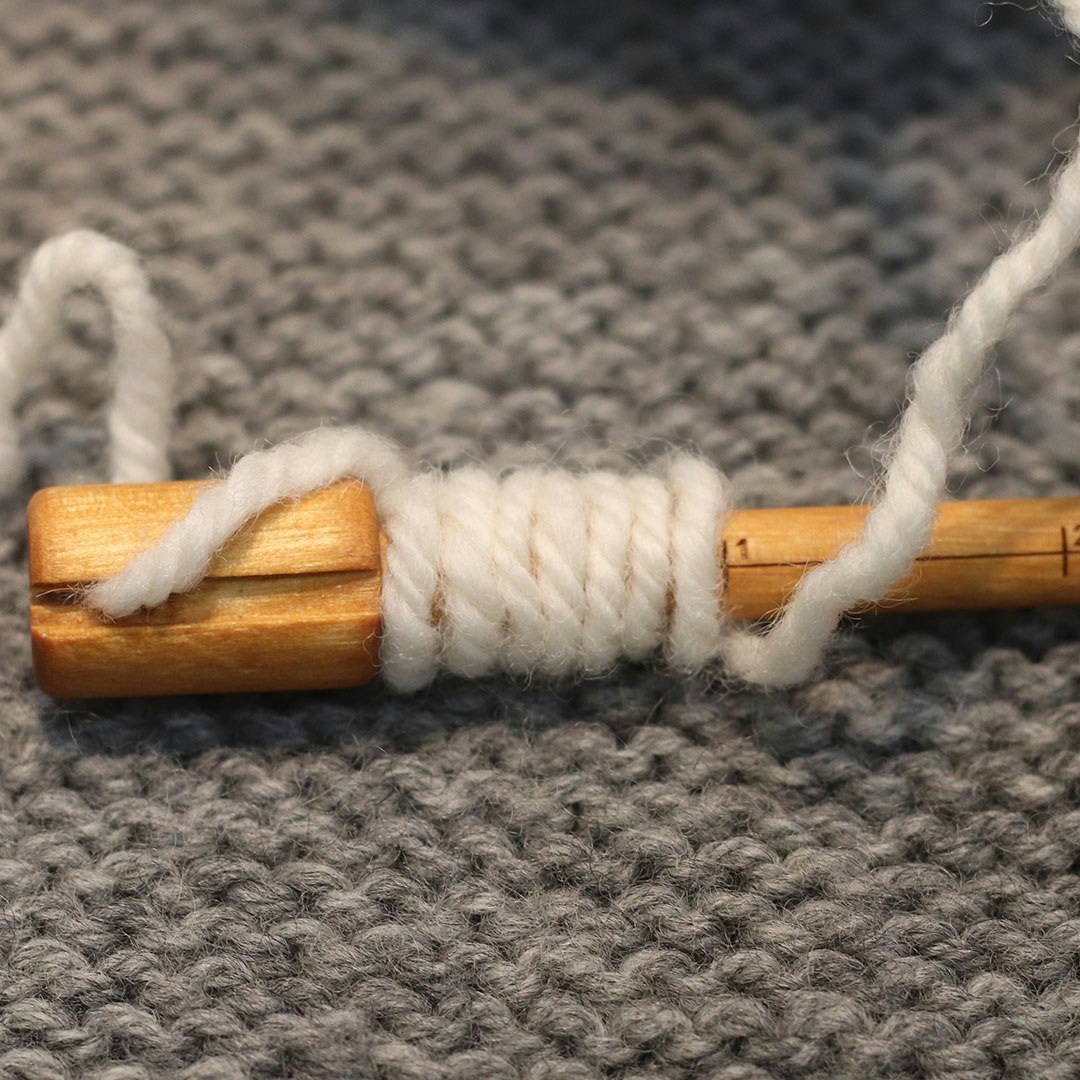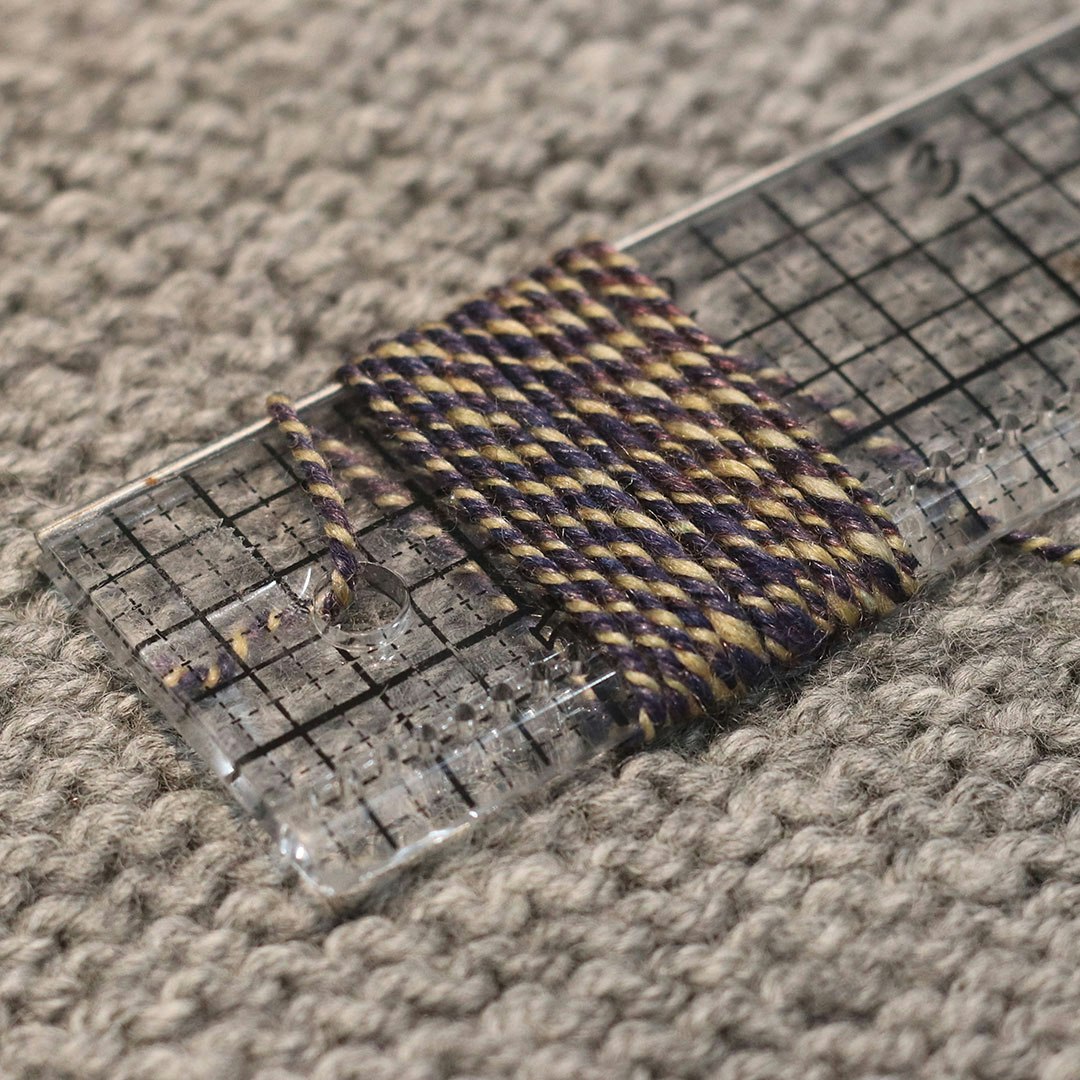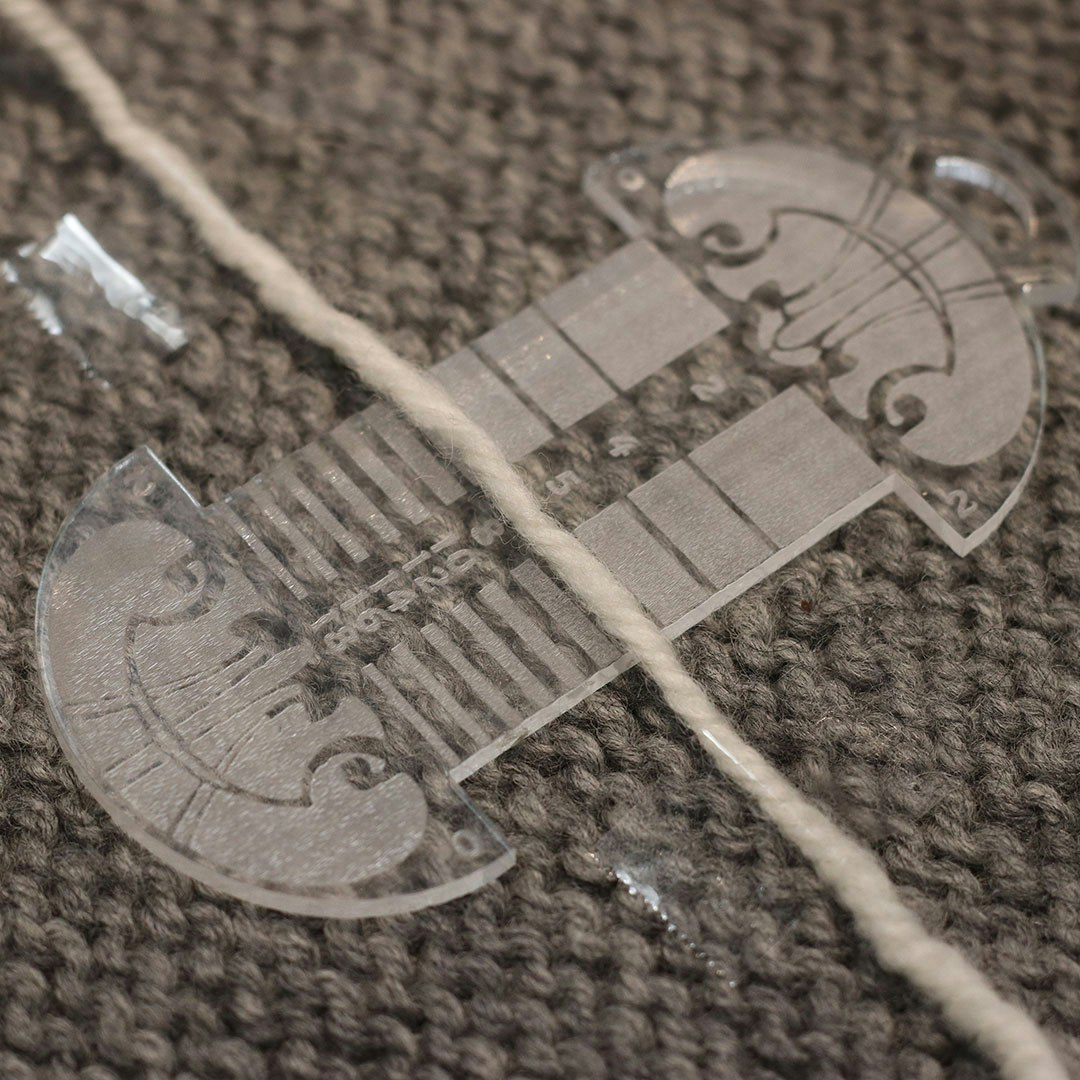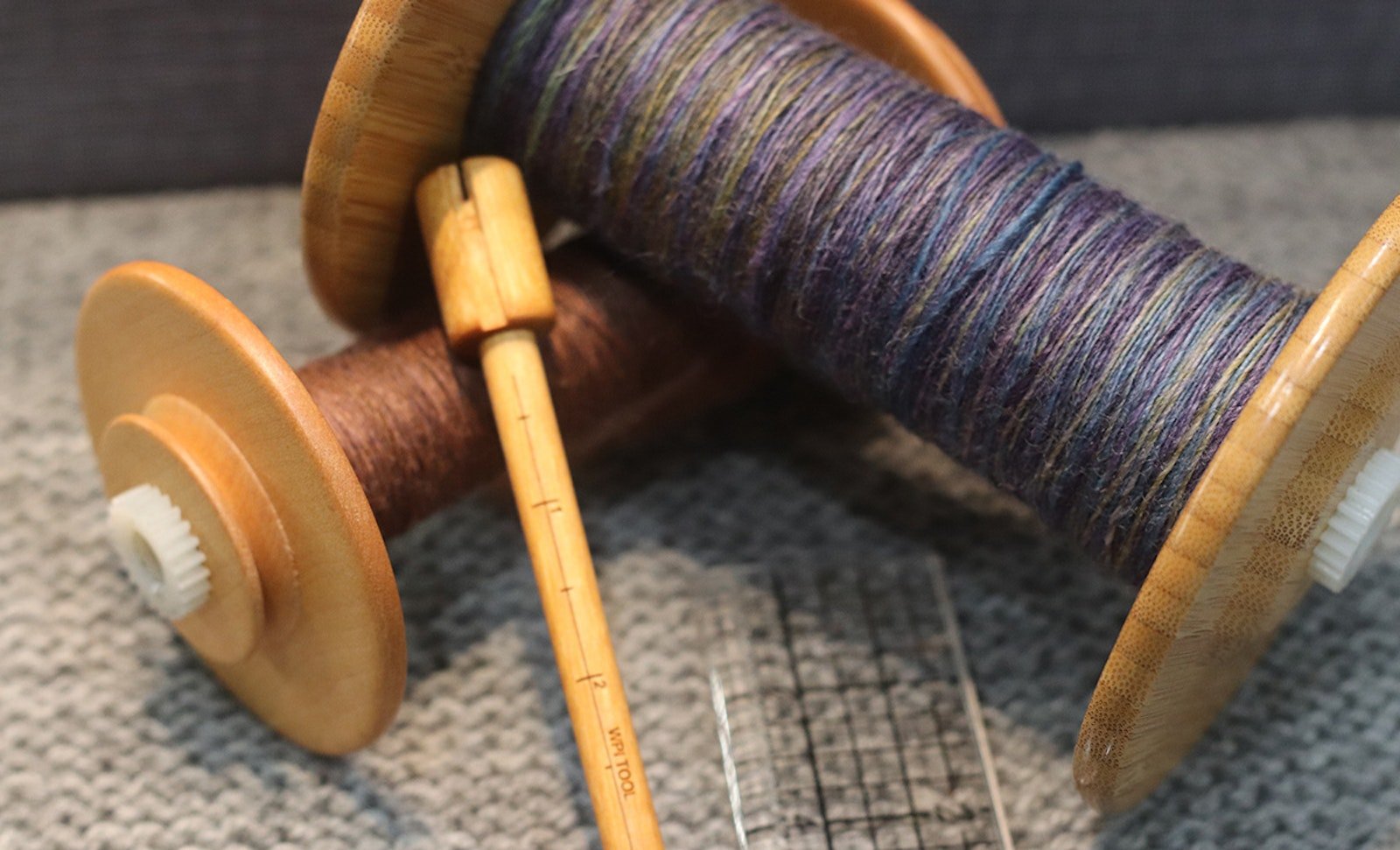The wraps per inch (wpi) gives handspinners an idea of the finished-weight category of our handspun yarn. A wpi tool can tell us whether we’ve spun a fine lace yarn or a super bulky yarn, which helps us describe our yarn to other spinners or in a note to ourselves for future reference. It’s also helpful when substituting our handspun for commercial yarn in knitting and crochet patterns.
Types of Tools
You can purchase a wpi tool, and they come in all sorts of shapes, but they have one thing in common: They have a notch or marking for measuring yarn over 1 inch. And if you don’t want to purchase a snazzy tool, a ruler works, too. There’s also an alternate tool called a spinner’s control card that has lines printed or etched on the tool. Let’s look at how to use them.
Round and Notched WPI Tool
With a wpi tool, secure the tip of the yarn by holding it, adding a piece of tape, or attaching it in the top groove of the tool. Wrap the yarn in a relaxed manner until you reach the 1-inch mark or it fills the 1-inch notch. Be careful not to wrap too loosely or too tightly; you want the yarn nice and even. Next, count the number of wraps and refer to the Craft Yarn Council’s Yarn Standard Table.

This round wraps per inch tool has a notch on the end to secure the yarn.
Ruler
Use the ruler as explained above for the wpi tool. Tape the end of your yarn to the ruler. Wrap your yarn evenly until you reach the 1-inch mark. Count the number of wraps. Tip: It might be helpful to mark off one inch with colored tape, such as blue painter’s tape, to designate the 1-inch wrapping space.

A ruler stands in for a wraps per inch tool in a pinch.
Spinner’s Control Card
A spinner’s control card requires no wrapping. Simply lay your handspun across the printed or etched line that most closely matches the width of your handspun. Be sure not to cover the line; you want your yarn to fall right within the marked space for the most accurate measurement. Note the number on the tool and compare it to the yarn standard table linked above.

This etched tool works both as a spinner’s control card and a wraps per inch tool.
Tips for Measuring Success
- Use a wpi tool to measure finished yarn. Yarn blooms when it has been finished, plumping up the diameter.
- Having a consistently spun yarn will yield the best measurements. Highly textured yarns and art yarns can make it hard to get an exact measurement.
- Wrap your yarn evenly, but not too tight. Too much tension on the yarn will skew the measurement.
- Have multiple tools to compare measurement for best results. You might find either wrapping the yarn or using a control card more helpful, depending on the project.
A wpi tool can come in handy, but it’s just one method for measuring your handspun. See my article on using a yarn balance for another useful measuring tool.
Now go measure your handspun!
Emonieiesha Hopkins is a Chicago, Illinois, fiber evangelist. She loves to gather with her wool and good fiber friends, anytime and any place. Learn more at hopkinsfiberstudio.com.

